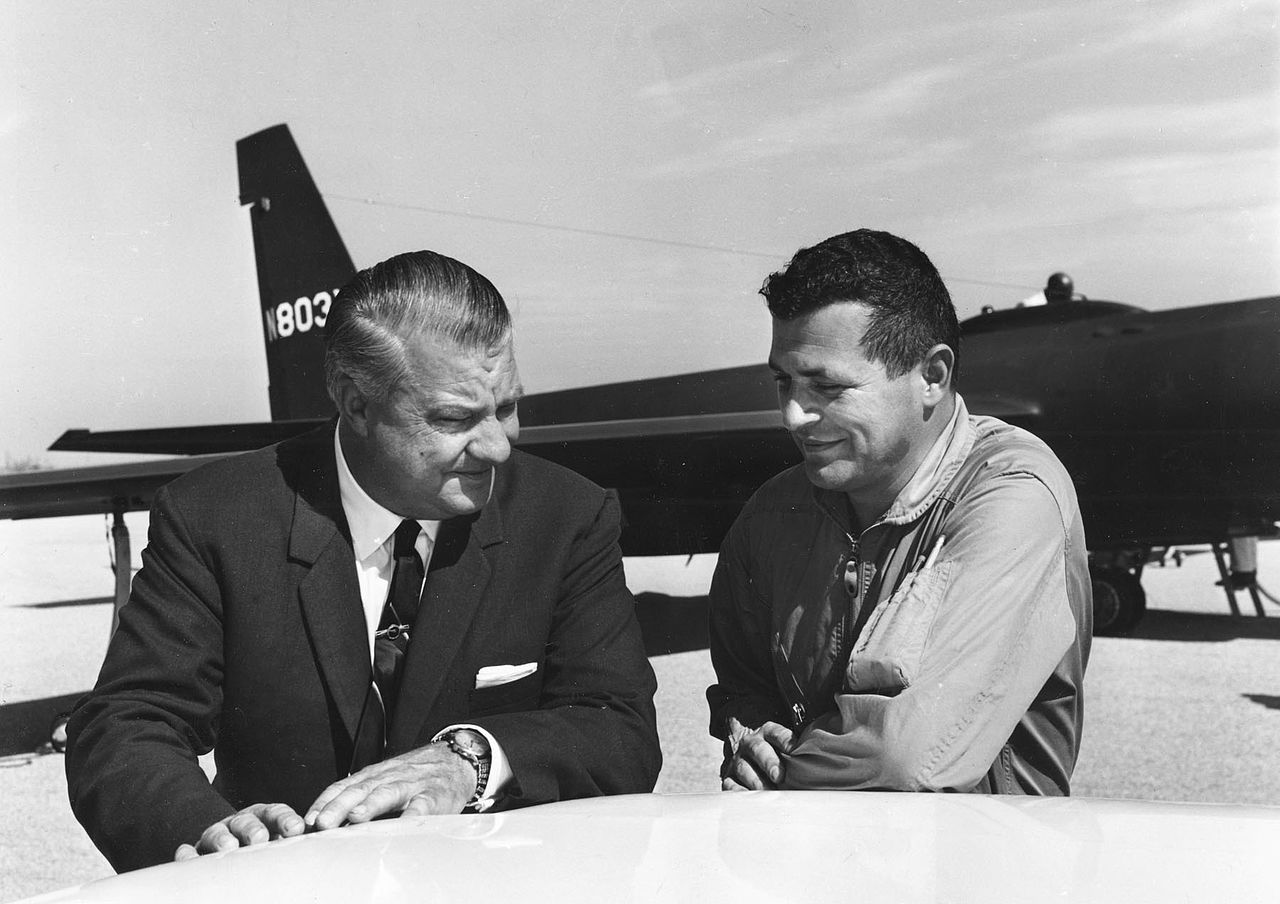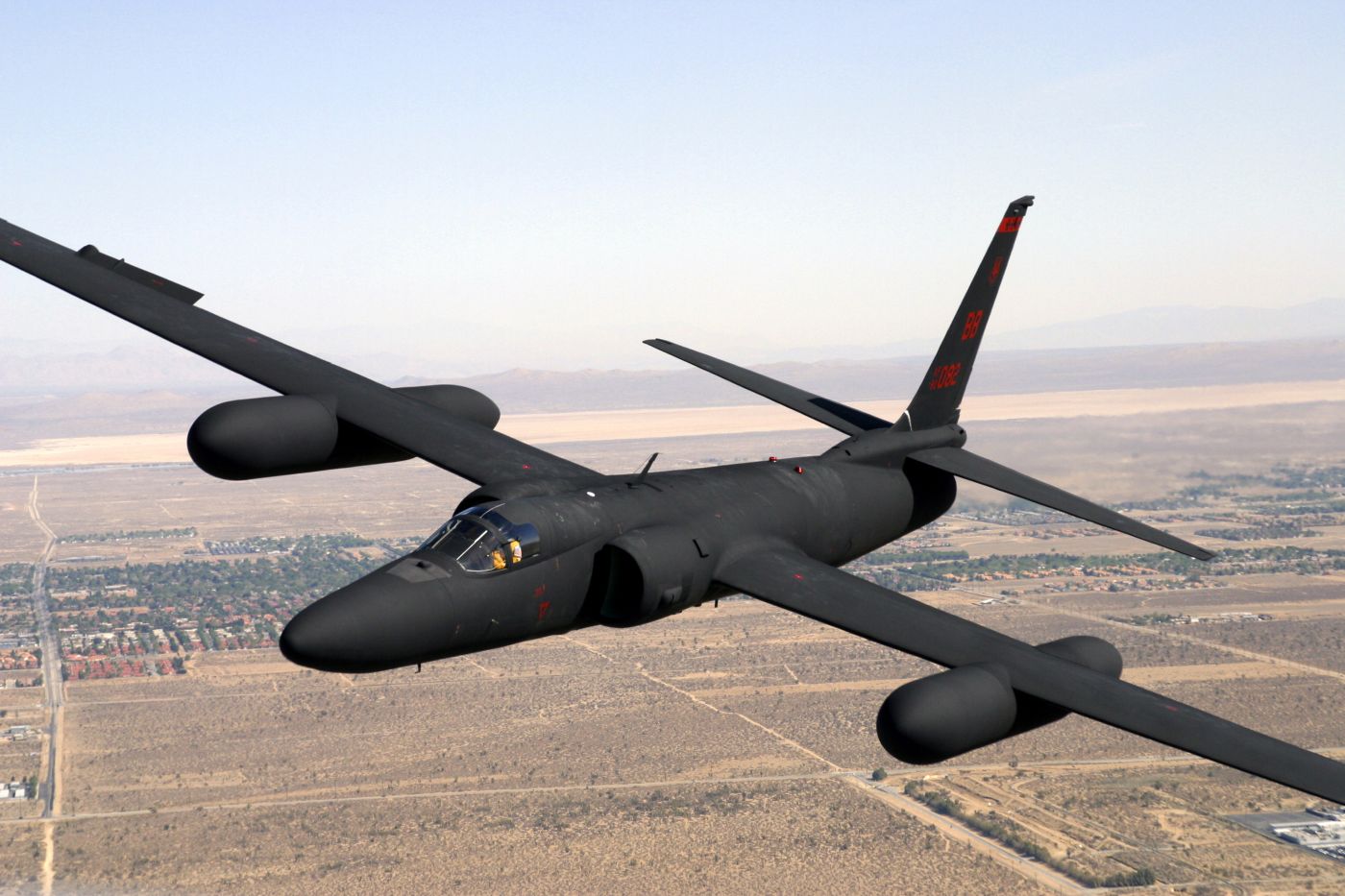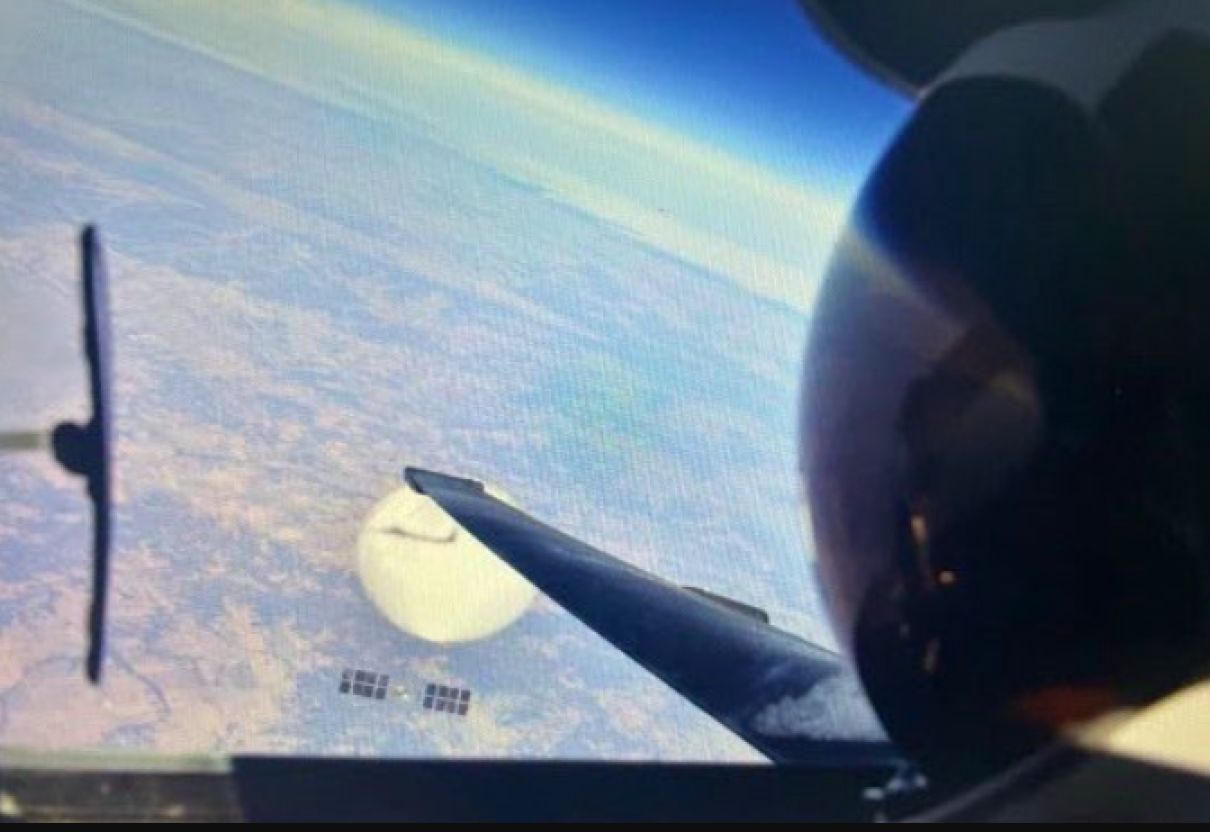In 1960, at the height of the Cold War between the United States and Russia, the US Air Force dispatched its U2 Spy plane deep inside the Soviet territory to conduct aerial surveillance. However, as fate would have it, the aircraft was shot down by the Soviet forces, and the pilot was imprisoned.
USAF pilot Francis Gary Powers was flying the single-seat aircraft when it was hit by an S-75 Dvina (SA-2 Guideline) surface-to-air missile and crashed near Sverdlovsk (modern-day Yekaterinburg). Powers safely parachuted to the ground but was apprehended by the Soviet military.
The Soviet Union later produced the captured pilot and pieces of the U-2’s surveillance equipment, including photographs of Soviet military bases, forcing American authorities to admit the mission’s true purpose.
This left the US officials red-faced since the incident was first passed off as the loss of a NASA-operated civilian weather research aircraft.
The US military was arduously snooping on Soviet military installations and its nuclear program. However, the abysmal failure of this mission came as a significant learning to the US military, its political establishment, and the Central Intelligence Agency (CIA).
However, the incident did not stop the United States from spying missions with its U-2 Spy aircraft over another rising military power and potential adversary, China. The officials in Washington knew that Beijing’s burgeoning military power would be adverse to its interests, especially after a tough front by Chinese forces in the Korean war.
Further, this was a period of booming cooperation between the Soviet Union and China, with the latter receiving military support and requisite technology for its nuclear program.
The United States and its CIA wanted to know the location of China’s military bases, its bases for submarines, and what kind of aircraft the Chinese were building at the time. However, wary of losing more of its US Air Force pilot in case the Chinese People’s Liberation Army (PLA) struck the planes down, the CIA hatched a spectacular plan.
As part of this plan, the United States turned to China’s estranged brother, the Republic of China (ROC), better known as Taiwan. A “Mutual Defense Treaty between the United States of America and the Republic of China” was signed in 1954, which Taiwan identified as siding with the US-led western camp.

How Taiwan Took On The Black Cats & US Spy Mission
The planes were transferred to Taiwan as part of a top-secret mission to spy on Communist China’s growing military capabilities, including its nascent nuclear program, according to accounts by the pilots in a Taiwanese documentary film and histories posted on US and Taiwan’s government websites.
At the time, the newly created U-2, also known as the Dragon Lady, seemed the ideal aircraft to undertake the mission. Its high-altitude capabilities, which, according to its developer Lockheed, allowed it to reach a stunning and unparalleled altitude of 70,000 feet, made it immune to antiaircraft missiles.
Taiwan, officially known as the Republic of China (ROC), appeared to be the ideal location for the mission. It was to be a proxy mission of the United States, as it seems in retrospect.
“Since America didn’t want to have its pilots shot down in a U-2 the way Gary Powers had been over the Soviet Union in 1960, which caused a major diplomatic incident, they turned to Taiwan, and Taiwan was all too willing to allow its pilots to be trained and to do a long series of overflights over mainland China,” Chris Pocock, author of “50 Years of the U-2,” explained in the 2018 documentary film “Lost Black Cats 35th Squadron.”
The U-2 was a challenging aircraft to operate. According to a narrative presented by Pocock at a lecture, eight aircraft were taken down, and six Taiwanese pilots died in training. Five more pilots were killed over the Chinese mainland during the mission.

The Taiwanese leader Chiang Kai-Shek and his son Chiang Ching-Kuo personally oversaw the Black Cats squadron, presenting a hope of returning to the Chinese mainland that they so dearly and diligently claimed as their own.
A US Air Force veteran, lieutenant general Lloyd Leavitt described the mission as “a joint intelligence operation by the United States and the Republic of China.”
The Air Force Research Institute in Alabama published a memoir of the Cold War written by Leavitt in 2010 that read, “American U-2s were painted with ROC insignia, ROC pilots were under the command of a ROC (Air Force) colonel, Washington planned overflight missions, and both countries were recipients of the intelligence gathered over the mainland.”
The “Weather Reconnaissance and Research Section” (also known as the “35th SQ”) was officially established on February 1, 1963, and placed under the control of the Office of Deputy Chief of Staff/Intelligence (A2) in the General Headquarters (previously known as the Command Headquarters) of the ROCAF.
Representatives from both nations signed the “Project Razor” agreement in 1967. It was valid from January 13, 1962, until May 24, 1974. Throughout the period, 220 reconnaissance missions were carried out, covering an area of more than 10 million square kilometers across 30 additional provinces on the Chinese mainland.
The Black Cat Squadron flew the renowned U-2 spy plane during daylight hours at extremely high altitudes to capture images of China’s expanding military might, especially its work on nuclear weapons.
The Chinese Communists responded to the Taiwanese pilots flying the U2 Spy planes. Commanders in the People’s Liberation Army were prodded by the top leaders, Mao Tse-Tung and Chou En-Lai, and redeployed radars & antiaircraft guns and upgraded their warplanes and missiles supplied by the Soviet Union.
In response, the CIA equipped the nationalist planes with cutting-edge electronic warfare equipment.
How The US Lost U2 Spy Planes & Taiwan Lost The Black Cats
Mike Hua was present when the first aircraft arrived at Taoyuan Air Base in Taiwan in early 1961 and was one of the first men to fly the U-2 for Taiwan.
“The missions covered the vast interior of the Chinese mainland, where almost no aerial photographs had ever been taken,” he wrote. “Each mission brought back an aerial photographic map of roughly 100 miles wide by 2,000 miles long, which revealed not only the precise location of a target but also the activities on the ground.”
In the 2018 documentary, Pocock said, “The idea was that Black Cats go out at night, and the U-2 would usually launch in the darkness. Their cameras were the eyes, which were very stealthy, quiet, and hard to get.”
As the PLA learned how to block U-2 operations in the ensuing years, three more Black Cat U-2 pilots perished during missions over China. According to Pocock, the mainland Chinese started developing missile launch sites but moved them around after learning from their radars where these aircraft were headed and their targets.
Hence, they would construct a site, occupy it for a while, but relocate the missiles if they believed the next flight would pass over this area. It was a cat-and-mouse game between the routines of the flights from Taiwan and the air defense troops of the mainland (China), calculating where the next flight would fly.

On November 1, 1963, Major Yeh Chang-di (Robin) piloted a U-2 on a search for possible nuclear installations in Wuhan, Hubei Province. PLAAF SA-2 missiles downed his aircraft near the Jiangxi Province town of Yin’tan, and he was later detained.
He was freed in Hong Kong on November 10, 1982, along with Major Chang Li-yi, another downed U-2 pilot, and the Central Intelligence Agency later arranged for both of them to reside in the United States.
Yeh and Chang, believed to have died in battle, did not return to Taiwan for many years. Eventually, in 1982, the pilots were allowed to return to Hong Kong, which was still a British territory.
But in the years that passed, the world underwent a significant transformation. The US had legally changed its recognition of Taipei to Beijing and no longer had a mutual defense agreement with Taiwan.
Although the US and Taiwan had broken their Cold War alliance, the CIA transferred the two pilots to the US to live there until 1990, when they were ultimately permitted to return to Taiwan.
CIA supervision over the U-2 program had long ago ended by the time of their release. According to a US Air Force history, it gave the planes to the service in 1974.
The 99th Strategic Reconnaissance Squadron of the Air Force and its U-2s relocated to Osan Air Base in South Korea two years later. The area was called “Black Cat” by Commander Lt. Col. David Young. The squadron is now referred to as the 5th Reconnaissance Squadron.
The U2 spy planes became focused again last month when they were dispatched to track the alleged Chinese spy balloon over the United States. Although the F-22 Raptor eventually shot down the balloon, the U2 pilot clicked photographs, including a selfie that reinforced the utility of this aircraft.

The aircraft formed the cornerstone of US surveillance operations. The fact that China shot five of them shall forever remain etched in history. The United States has refused to publicize more information regarding this.
On its part, China teased the United States in 2020 when it invited a US Air Force pilot to view the Chinese exhibit on U-2s that were downed by the Chinese military more than 40 years ago.
A Weibo post on August 25 by the Military Museum of the Chinese People’s Revolution said that anybody knowledgeable about military history knows that the People’s Liberation Army Air Force has repeatedly shot down U-2 high-altitude reconnaissance aircraft.
- Contact the author at sakshi.tiwari9555 (at) gmail.com
- Follow EurAsian Times on Google News




